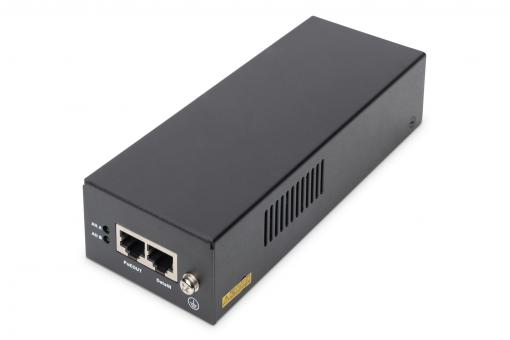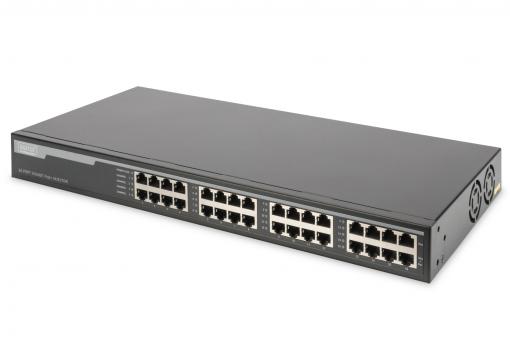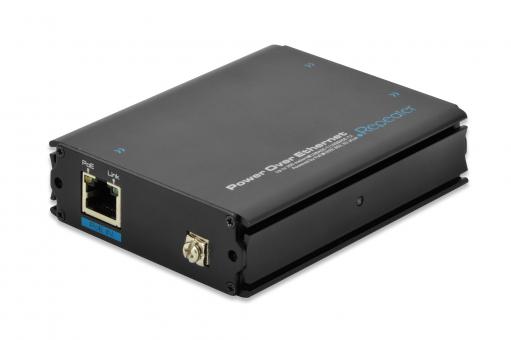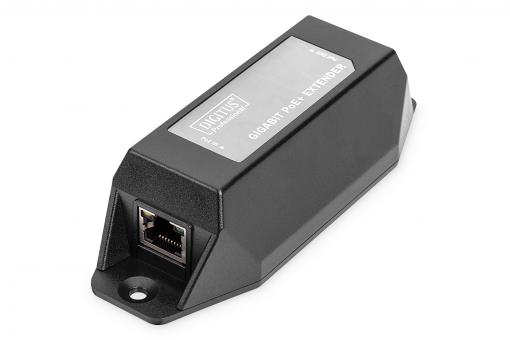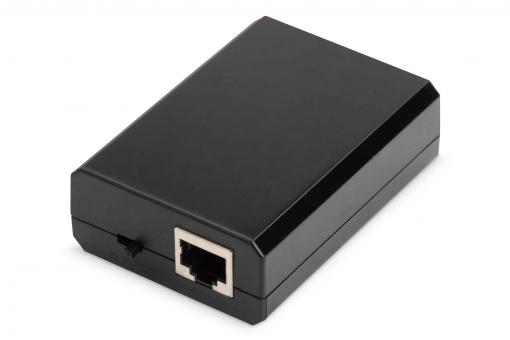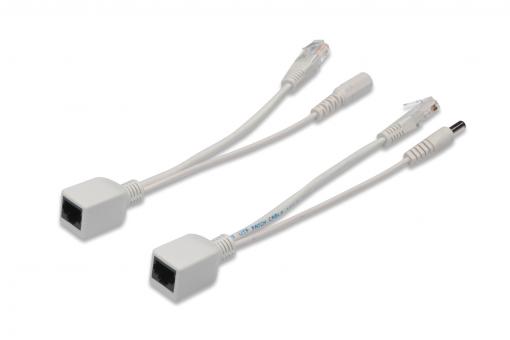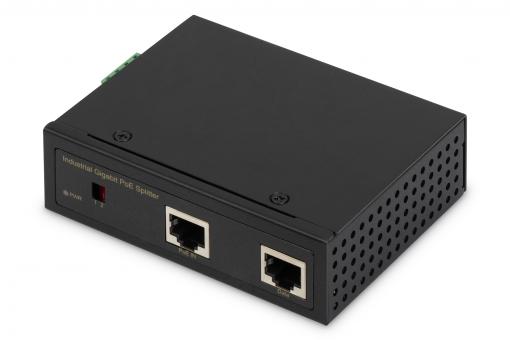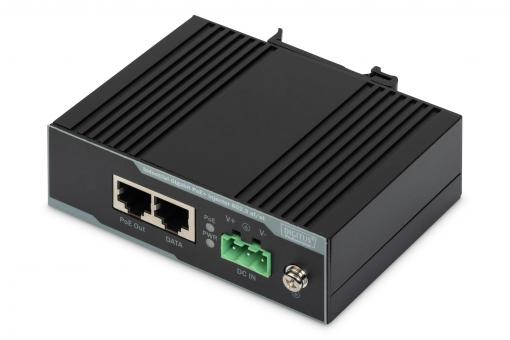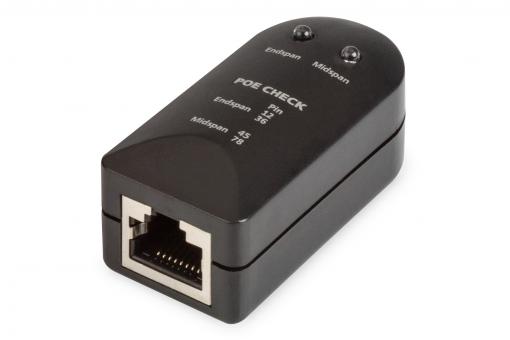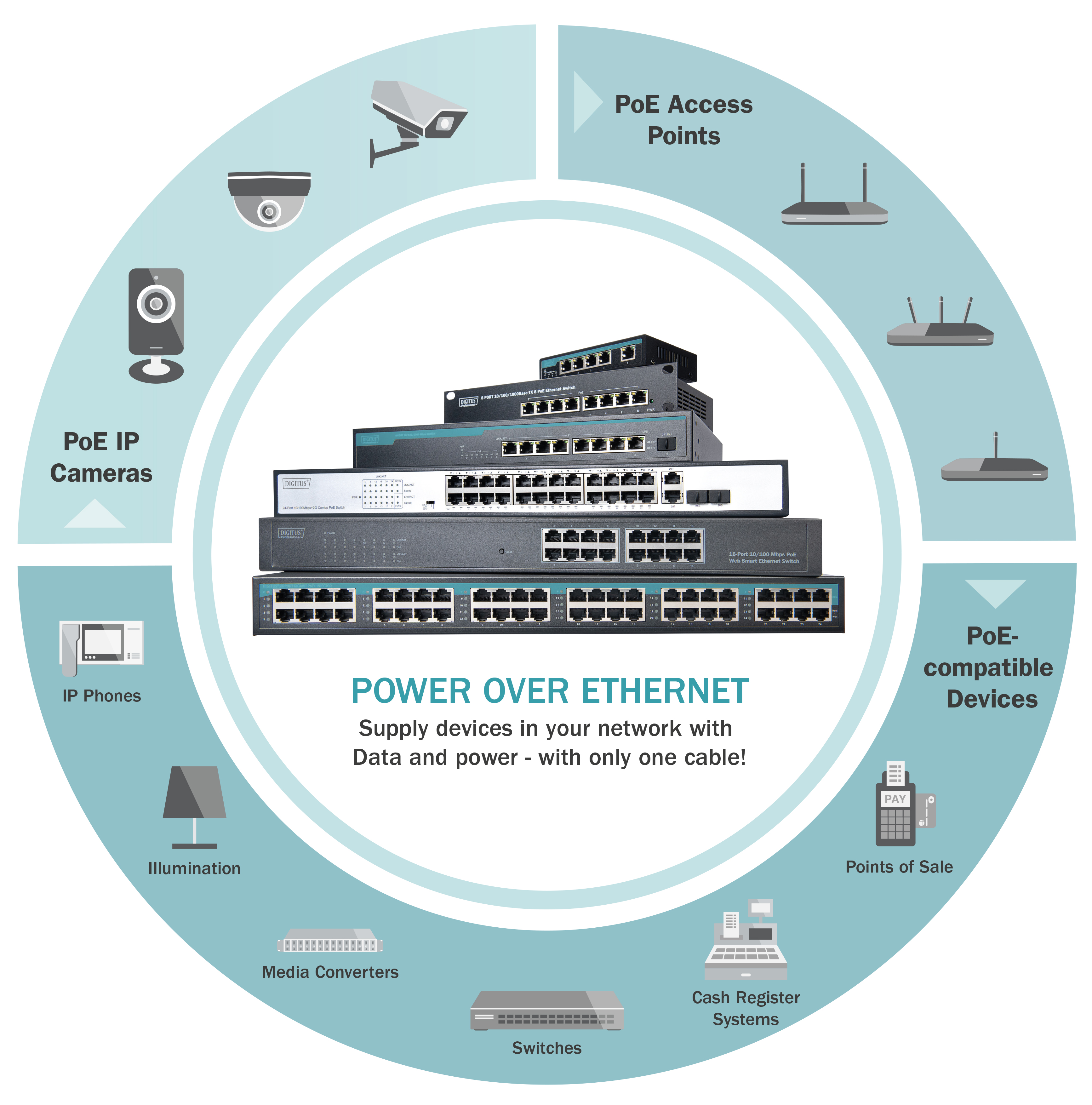
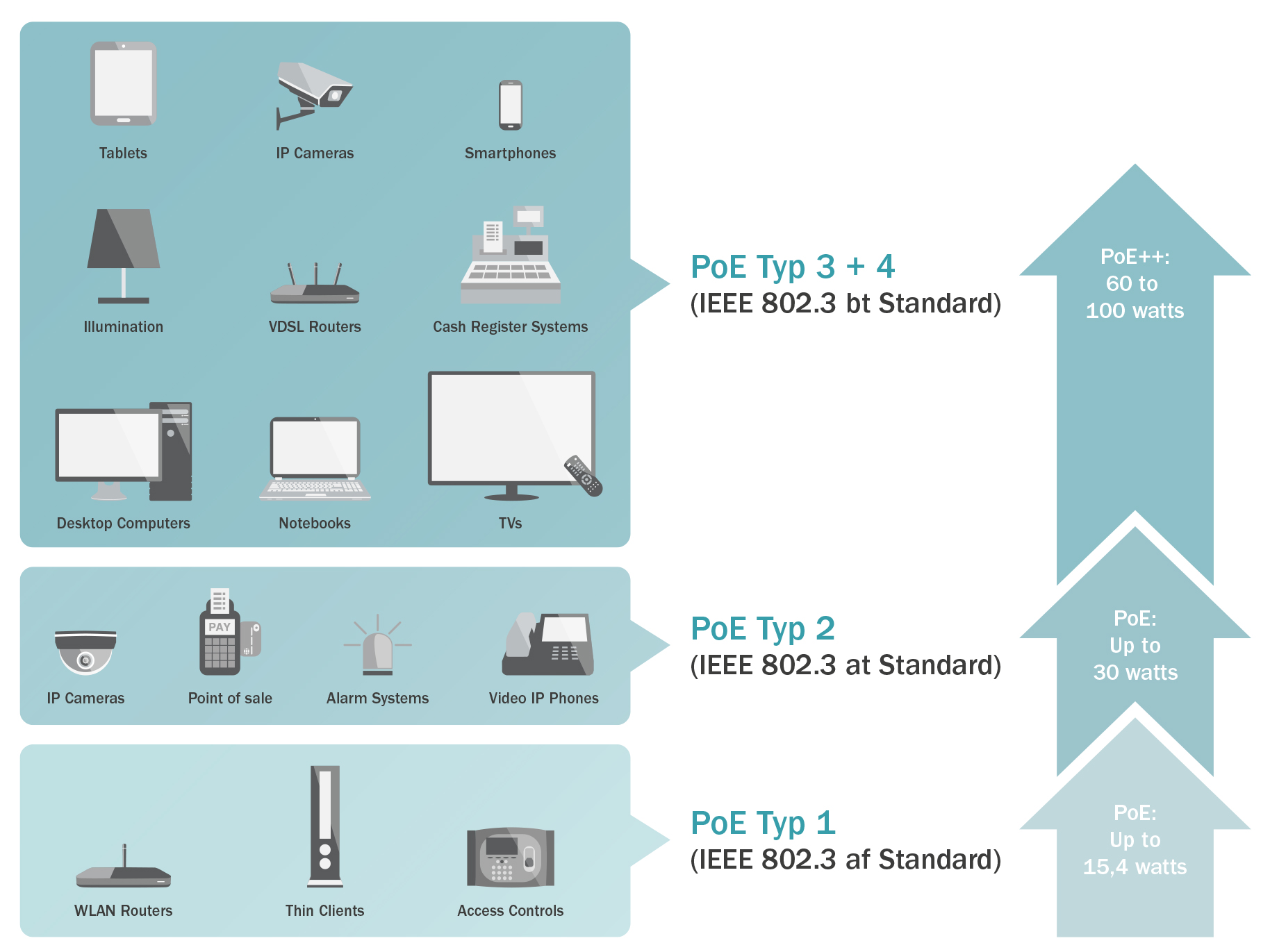
HISTORY OF POE TECHNOLOGY

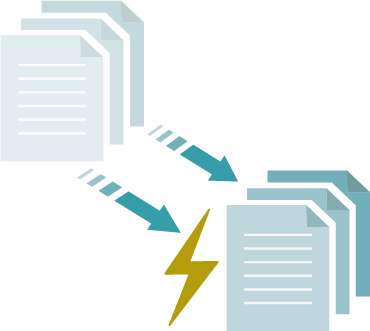

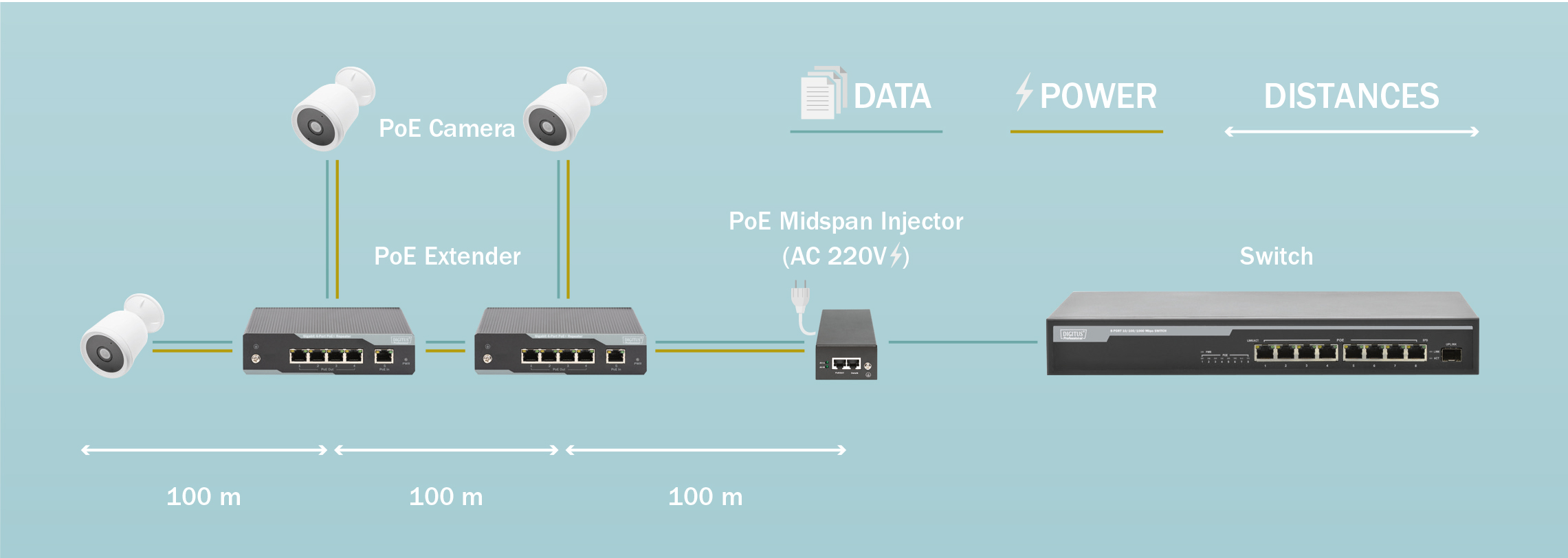
PoE Splitter – here's how it works!

1.
Power and data are transported to the PoE splitter over the network cable.
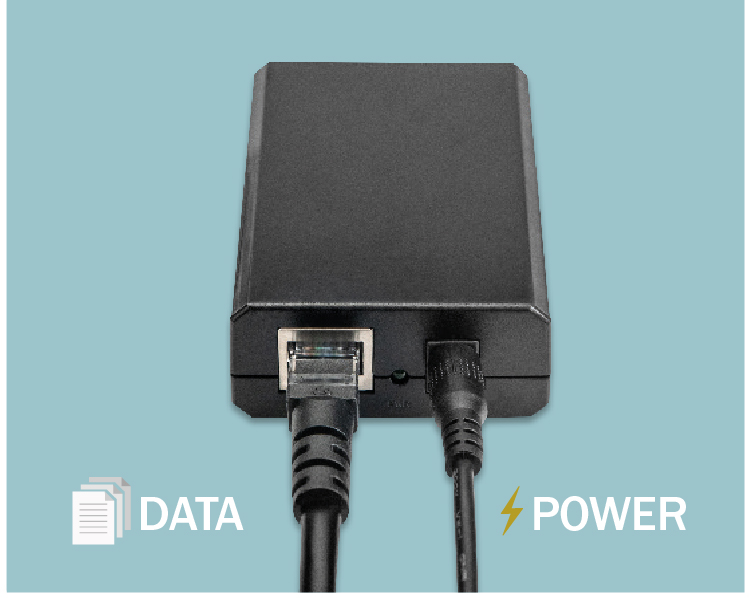
The PoE splitter separates the power that is transported over the network cable and emits it from a separate output on the back side of the device.

At the same time, the data is forwarded via an additional RJ45 connection point.
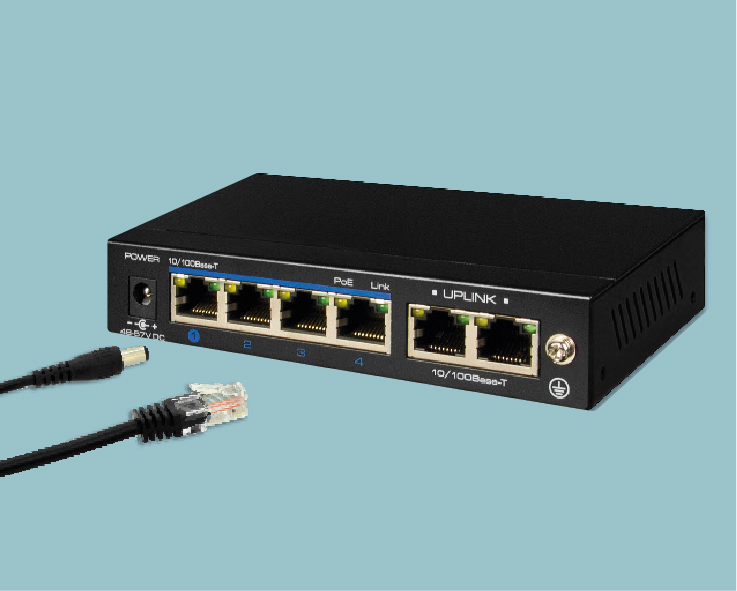
Other peripheral devices can also be operated with the discharged electricity.
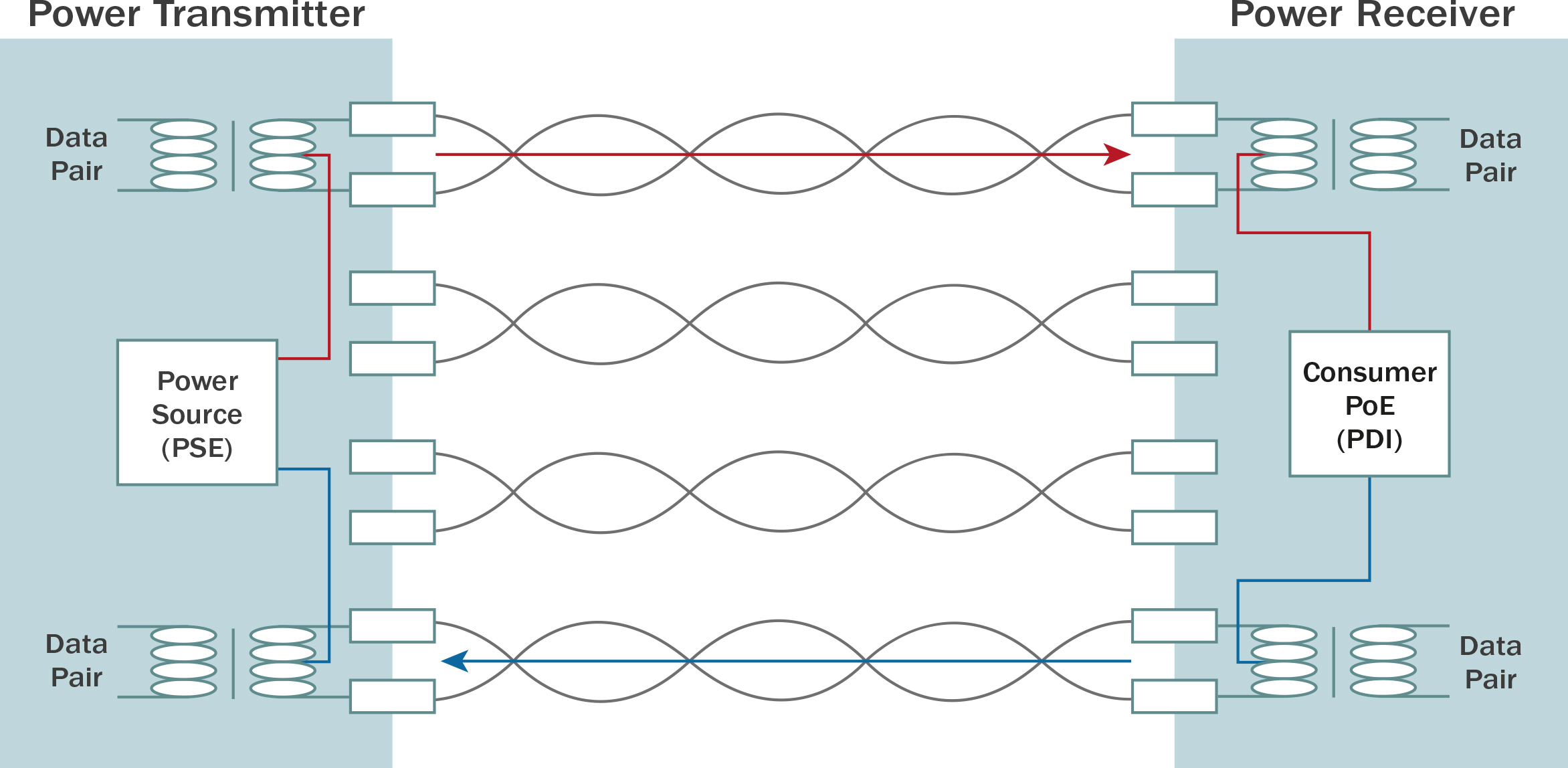
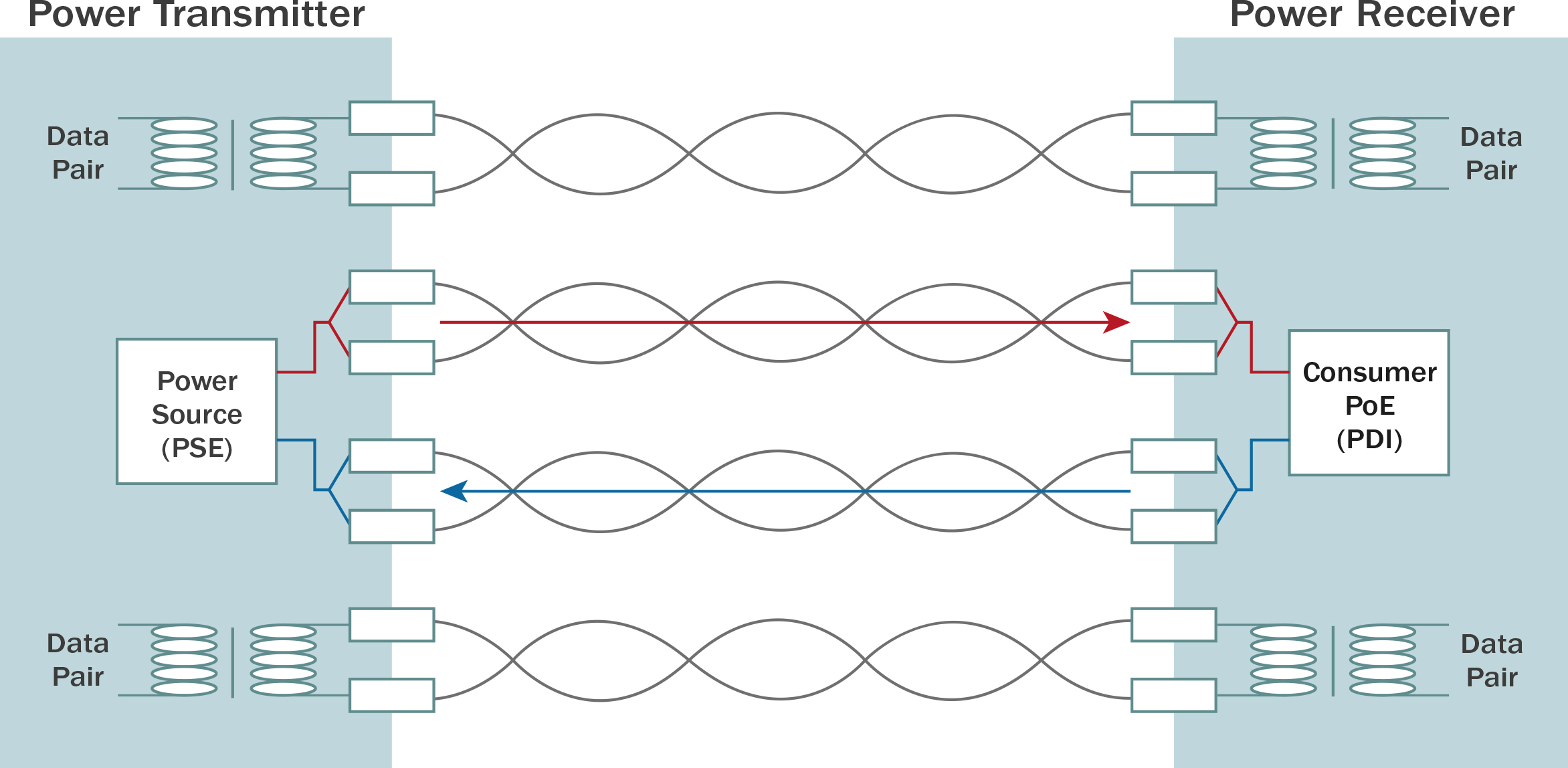
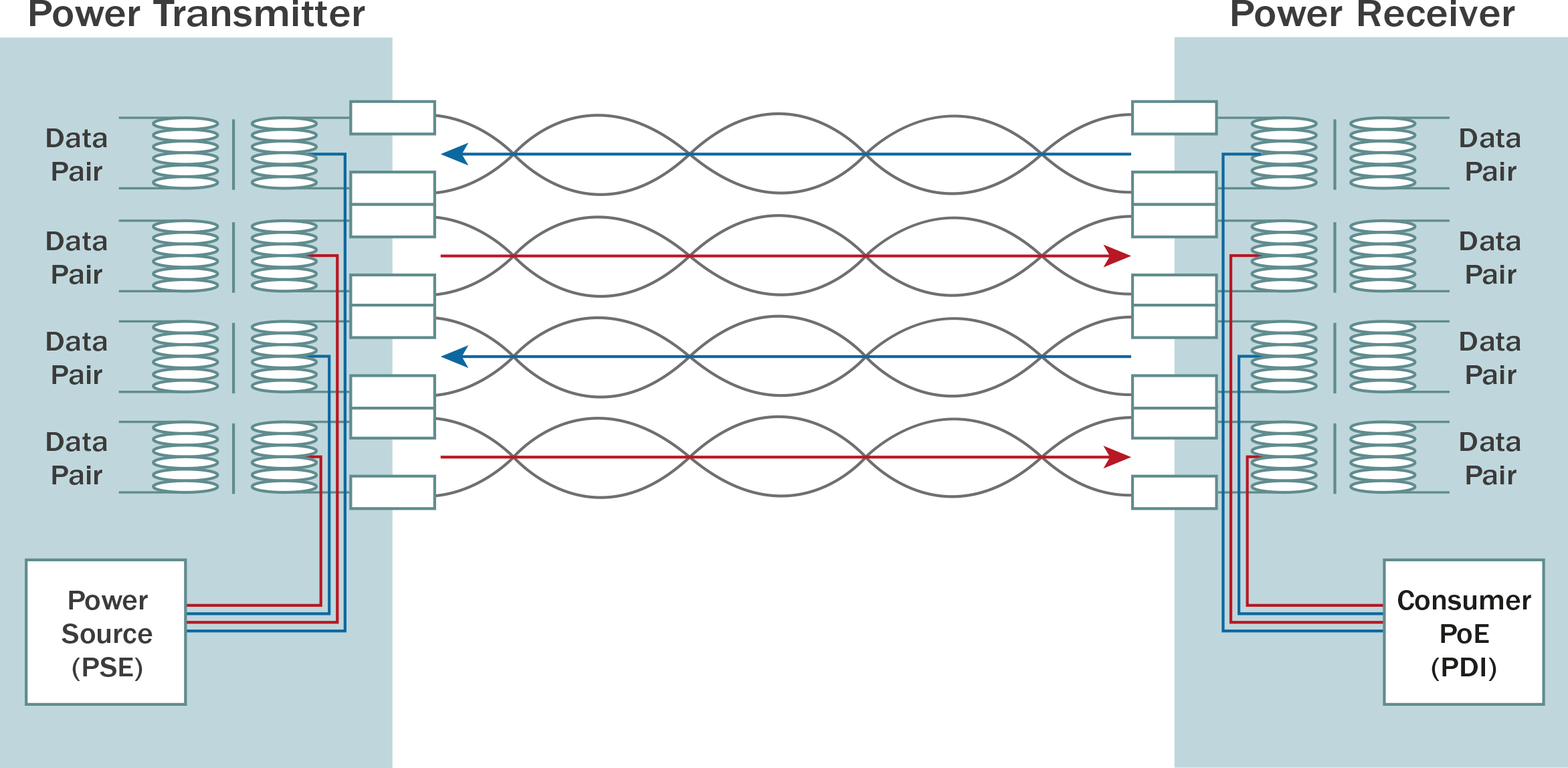
|
IEE-STANDARD |
POE (802.3 AF
- 2003) |
POE (802.3 AT
- 2009) |
POE TYP 3 + 4
(802.3 BT - 2018) |
|
Output voltage in V (DC) |
36 - 57 V |
42,5 - 57 V |
37 - 57 V |
|
Output power operation in mA (DC) |
350 mA |
600 mA |
350 mA |
|
Output power start mode in mA (DC) |
400 mA |
400 mA |
400 mA |
|
Power of (PSE) supply in W |
Max. 15,4 W |
Max. 30 W |
Max. 15,4 W |
|
Power of end devices (PD) in W |
Max. 12,95 W |
Max. 25,5 W |
Max. 12,95 W |
|
PSE Class |
1, 2, 3 |
4 |
1, 2, 3 |
|
Supported end devices (PD type) |
1 |
1 and 2 |
1 |
|
Strand pairs used |
2 |
2 |
2/4 |


